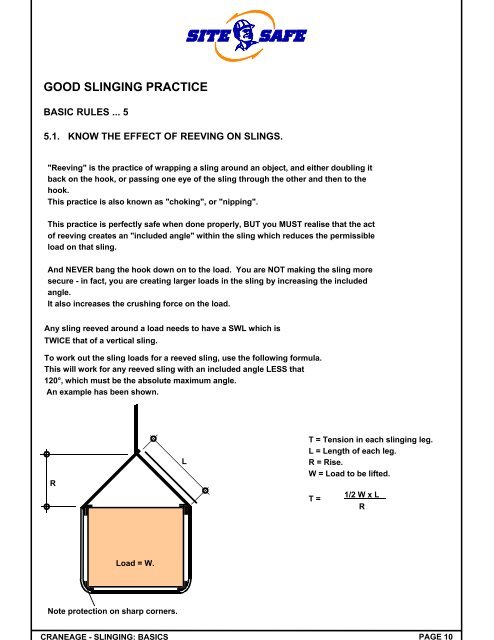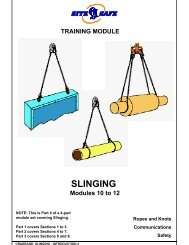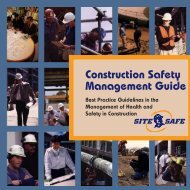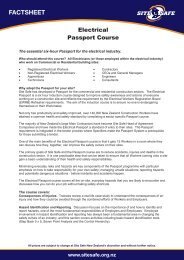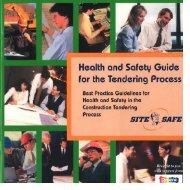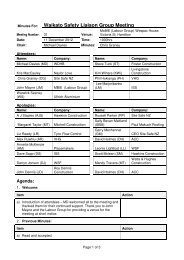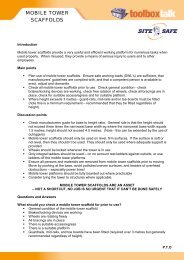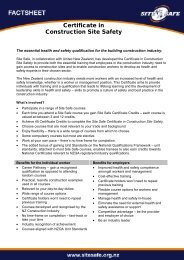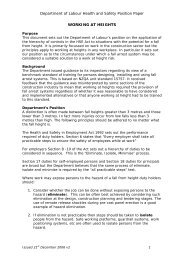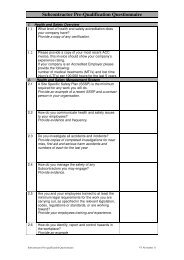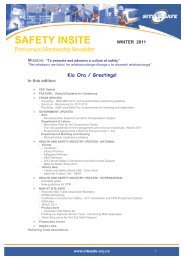Create successful ePaper yourself
Turn your PDF publications into a flip-book with our unique Google optimized e-Paper software.
GOOD SLINGING PRACTICE<br />
BASIC RULES ... 5<br />
5.1. KNOW THE EFFECT OF REEVING ON SLINGS.<br />
"Reeving" is the <strong>practice</strong> of wrapping a sling around an object, and either doubling it<br />
back on the hook, or passing one eye of the sling through the other and then to the<br />
hook.<br />
This <strong>practice</strong> is also known as "choking", or "nipping".<br />
This <strong>practice</strong> is perfectly safe when done properly, BUT you MUST realise that the act<br />
of reeving creates an "included angle" within the sling which reduces the permissible<br />
load on that sling.<br />
And NEVER bang the hook down on to the load. You are NOT making the sling more<br />
secure - in fact, you are creating larger loads in the sling by increasing the included<br />
angle.<br />
It also increases the crushing force on the load.<br />
Any sling reeved around a load needs to have a SWL which is<br />
TWICE that of a vertical sling.<br />
To work out the sling loads for a reeved sling, use the following formula.<br />
This will work for any reeved sling with an included angle LESS that<br />
120°, which must be the absolute maximum angle.<br />
An example has been shown.<br />
R<br />
Load = W.<br />
Note protection on sharp corners.<br />
L<br />
T = Tension in each <strong>slinging</strong> leg.<br />
L = Length of each leg.<br />
R = Rise.<br />
W = Load to be lifted.<br />
CRANEAGE - SLINGING: BASICS PAGE 10<br />
T =<br />
1/2 W x L<br />
R


